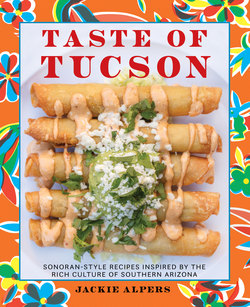Читать книгу Taste of Tucson - Jackie Alpers - Страница 11
На сайте Литреса книга снята с продажи.
ОглавлениеTucson History & Timeline
Tucson is one of the oldest continually inhabited communities in the world.
10,000 BCE Paleo and Archaic hunters and gatherers are found to have settled here.
1000BCE Evidence of agricultural settlements are located near waterways.
200 to 1450 CE Hohokam culture thrives. Pima and Tohono O’odham are their descendants.
~1540 The Coronado Expedition crosses Arizona in search of the “Seven Cities of Gold.” Conquistadors are the first to introduce horses and other Old World livestock to the region.
~1650 The first Europeans settle in the region. By then the Hohokam culture had collapsed, perhaps either from the irrigation water becoming highly mineralized or from infighting.
1699 Father Francisco Kino establishes the Mission San Xavier del Bac south of Tucson. Franciscan friars introduce olives, wheat, wine, ranching, and many non-native plant species to the region.
1775 Official birthdate of the City of Tucson. Hugo O’Conor establishes the Tucson Presidio.
1821 Tucson becomes part of Mexico, thereby winning independence from Spain.
1854 The Gadsden Purchase in Tucson, a 29,670-square-mile region of present-day Southern Arizona and Southwestern New Mexico, falls under the jurisdiction of the United States.
1863 Arizona becomes an official territory.
1867 to 1877 Tucson becomes the territorial capital of Arizona.
1880 The Southern Pacific Railroad reaches Tucson. The population climbs to 8,000.
1912 Arizona becomes the forty-eighth state in the Union.
1950Tucson’s populationreaches 120,000.
Early 1950s The chimichanga is reportedly invented in Tucson when El Charro proprietor Monica Flin accidentally drops a burro (a larger version of a burrito) into a frying pan filled with hot oil and exclaims, “Chimichanga!” instead of the curse word that she really wanted to say (because children were present).
1960Tucson’s populationreaches 220,000.
2015 UNESCO deems Tucson America’s first City of Gastronomy, an honor given to towns with important culinary traditions. “The Old Pueblo” (Tucson’s nickname) got the nod for its “culturally layered history, a variety of heritage food ingredients, and a continuity of traditional food preparation techniques.”
10
